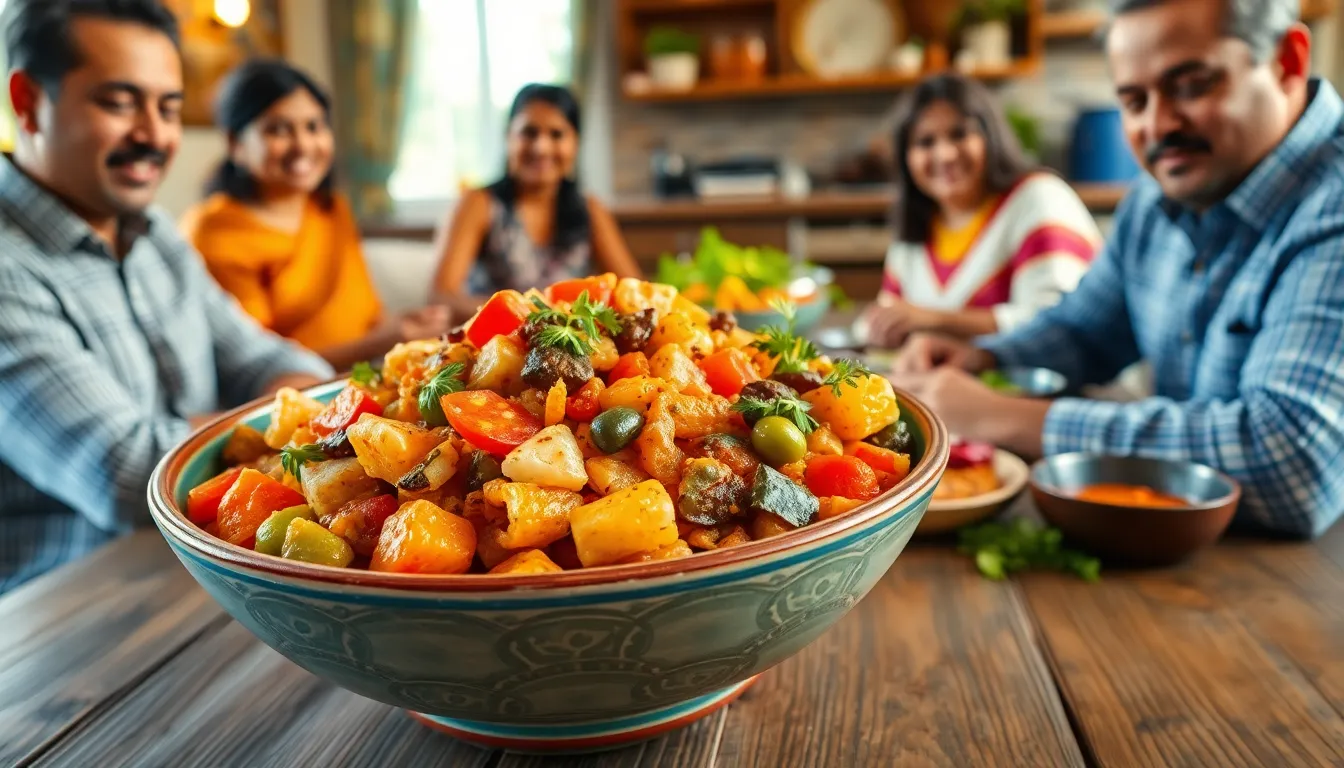In the vibrant world of culinary delights, few dishes can rival the charm of jharaahar. This lesser-known gem is a delightful blend of flavors and textures that promises to tickle taste buds and spark curiosity. Imagine a dish so enticing it could make even the pickiest eater reconsider their life choices.
Table of Contents
ToggleOverview of Jharaahar
Jharaahar showcases a delightful combination of flavors and textures that makes it stand out in culinary offerings. Originating from a specific region known for its rich culinary heritage, this dish merges local ingredients with traditional cooking methods. Diners often praise jharaahar for its ability to cater to diverse taste preferences, making it a popular choice for gatherings.
The dish typically includes a mix of spices. Various vegetables contribute to its vibrant appearance, while proteins like chicken or lentils often add depth. Each ingredient complements one another, creating a harmonious blend. Recipes may vary according to personal or regional preferences, which adds to its versatility.
Preparation involves careful attention to cooking techniques. Chefs often sauté spices first to release their essential oils before adding vegetables and proteins. Slow cooking methods enhance the dish’s flavors, allowing them to meld together beautifully. Serving jharaahar hot ensures that its aromatic qualities shine.
Cultural significance plays a vital role in jharaahar’s allure. Many families pass down recipes through generations, turning this dish into a cherished tradition. Celebrations often feature jharaahar, as it embodies togetherness and shared culinary experiences.
Exposure to jharaahar can transform how individuals perceive their culinary options. Even the most selective eaters find pleasure in this dish, as it expands their culinary horizons. It’s not just a meal; it represents an adventure in flavors that invites exploration.
Cultural Significance

Jharaahar holds a unique place in culinary traditions, symbolizing togetherness and community. The dish not only represents a blend of flavors but also a rich cultural narrative.
Historical Context
Jharaahar traces its roots back several generations, often preparing it in family gatherings. Traditionally, the dish serves as a way to honor ancestors, reflecting the cooking techniques and ingredients unique to the region. Ingredients like seasonal vegetables and locally sourced proteins highlight its historical importance. Communities have celebrated jharaahar during festivals, linking culinary practices to shared heritage.
Modern Interpretation
In contemporary dining, jharaahar adapts to modern preferences while retaining its traditional essence. Chefs experiment with nutritional enhancements, introducing alternatives like quinoa and plant-based proteins. This adaptation appeals to health-conscious diners and enhances the dish’s viability in today’s culinary landscape. Restaurants frequently feature jharaahar on their menus, celebrating its history while inviting new generations to appreciate its rich flavors.
Key Features of Jharaahar
Jharaahar showcases multiple distinctive features that contribute to its appeal, emphasizing both art and technique.
Artistic Elements
Aesthetic presentation plays a crucial role in jharaahar. Vibrant colors from fresh vegetables and spices create visual appeal. Plating techniques highlight textures, enhancing the overall dining experience. Chefs often arrange the dish artistically, using garnishes like herbs or edible flowers. This thoughtful presentation emphasizes the dish’s cultural roots and invites diners to appreciate its heritage.
Performance Techniques
Preparation of jharaahar employs a range of performance techniques. Sautéing spices at precise temperatures maximizes the release of essential oils. Slow cooking techniques infuse flavors, allowing all ingredients to meld harmoniously. Ingredient selection involves using local, seasonal produce, ensuring freshness in every bite. Knowledgeable chefs adapt cooking methods to enhance nutritional value, integrating modern health-focused trends into the preparation process. Together, these techniques preserve traditional methods while appealing to contemporary palates.
Popular Interpretations
Jharaahar inspires various interpretations through its rich cultural backdrop. Celebrated by culinary enthusiasts, its unique essence resonates with many communities.
Renowned Artists
Chefs known for their creativity often showcase their versions of jharaahar. They bring individual flair while respecting traditional methods. Master chefs incorporate locally sourced ingredients, enhancing flavor profiles and visual appeal. Renowned artists frequently emphasize this dish in their practices, blending creativity with heritage. Each chef’s interpretation adds layers of meaning, elevating jharaahar’s status in contemporary cuisine.
Notable Performances
Culinary events highlight jharaahar, capturing audiences with its vibrant presentation and enticing aromas. Renowned festivals often include live cooking demonstrations, allowing chefs to exhibit their skills. During these performances, chefs engage the crowd, explaining the significance of ingredients and techniques. Attendees experience the dish’s depth while appreciating its cultural connections. Notable performances create lasting impressions, ensuring that the art of jharaahar continues to flourish within communities.
Jharaahar stands as a testament to the rich culinary traditions that unite communities. Its unique blend of flavors and textures not only delights the palate but also fosters a sense of togetherness. As chefs continue to innovate while honoring traditional methods, jharaahar remains a vibrant part of contemporary dining.
The dish’s adaptability ensures it resonates with both seasoned food enthusiasts and newcomers alike. By celebrating its cultural significance and inviting creative interpretations, jharaahar is poised to thrive in the culinary world for generations to come. This beloved dish not only nourishes the body but also connects people through shared heritage and experience.





